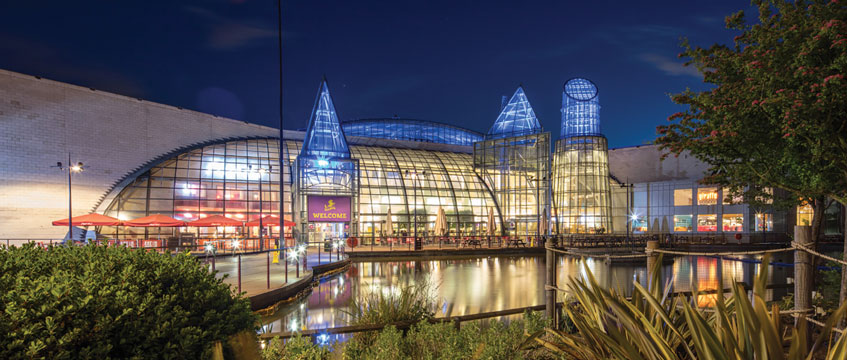COMMENT: Something strange is happening in retail valuations. For the first time in its history, a stake in Bluewater (pictured) traded in December for over 8% NIY – more than 300 basis points higher than any previous trade.
Although it’s a passive stake, five years ago this yield would have been unthinkable. Meanwhile, a strong community shopping centre in Yate is under offer following a highly competitive sale process. Its yield is also reported to be in the 8s, above guide price.
Of course, there are asset- and deal-specific considerations, and initial yield is a one-dimensional pricing metric. But if indicative of market pricing, this is the smallest yield gap between these two very different types of asset since 2009. With market analysts starting to bring in local asset yield expectations in response, there’s a growing consensus on local retail. Are we seeing a buy signal for investors in regional shopping centres? If retail is polarising between regional destinations and local convenience, is regional now relatively cheap? Are their cashflows sustainable?
Snap back
Visitor behaviour gives us a key insight into the prospects for these assets. The pandemic has shaken up shopper habits, accelerating online and shifting spend more locally. The lockdown at the start of 2021 hit the largest “super-regional” shopping centres such as Bluewater the hardest. Visitor Insights reports visitor numbers shrinking by 78% on average versus a lower, albeit still significant, 37% decline for local shopping centres.
But we are seeing evidence of a dramatic “snap back” effect in visitor numbers for regional destinations. Performance is polarising for the biggest and best schemes, with the largest super-regional assets significantly outperforming their segment of the market by visitor numbers. By the third quarter, the best-performing super-regionals were tracking 19% higher than the super-regional average. Further down the league tables, some assets have been buoyed by visitors shopping more locally despite their historic positioning as “day out” destinations, meaning they are now oversized for their true purpose.
The top five centres for footfall recovery have more space allocated to leisure, amenities and services than the average. They are aspiring to create a destination and to differentiate against online. However, their price point is accessible to a wide range of demographics, without over-allocating space to niche premium offerings. With a resurgent leisure occupational market, many regional assets are focusing on bolstering this experience with a broader leisure offering, from trampolining to crazy golf and a more tailored food and beverage mix. These uses are often capex hungry and offer low rents, but crucially can help to set the bar in that region for visitor experience, while absorbing surplus retail space.
Of course, a scheme’s future cashflows and attractiveness of its initial yield also depend on occupational demand to fill space. Many retailers are reporting positive trade, particularly in grocery, value and homewares categories – and in select parts of fashion. Even troubled department store formats are essentially back in play, with operators like Frasers actively acquiring space in strong locations. Once revised rental terms are priced in, has the stage been set for inward yield shift?
Time to exit?
So visitors are returning to destination shopping centres, and we know what is working on the ground. Listed owners and lenders will be looking to consolidate their holdings and exit many of these assets over the coming 24 months.
Behind the headline yields, which are wide on any historic basis, the detail required to assess these opportunities fully is greater than ever. Luckily, we now have more data than ever before to understand them. For investors with the firepower to buy at a regional scale, these mismatched yields on regional destinations could be a compelling way to play the next phase of recovery.
Jonathan Cole is investment director at Ellandi











